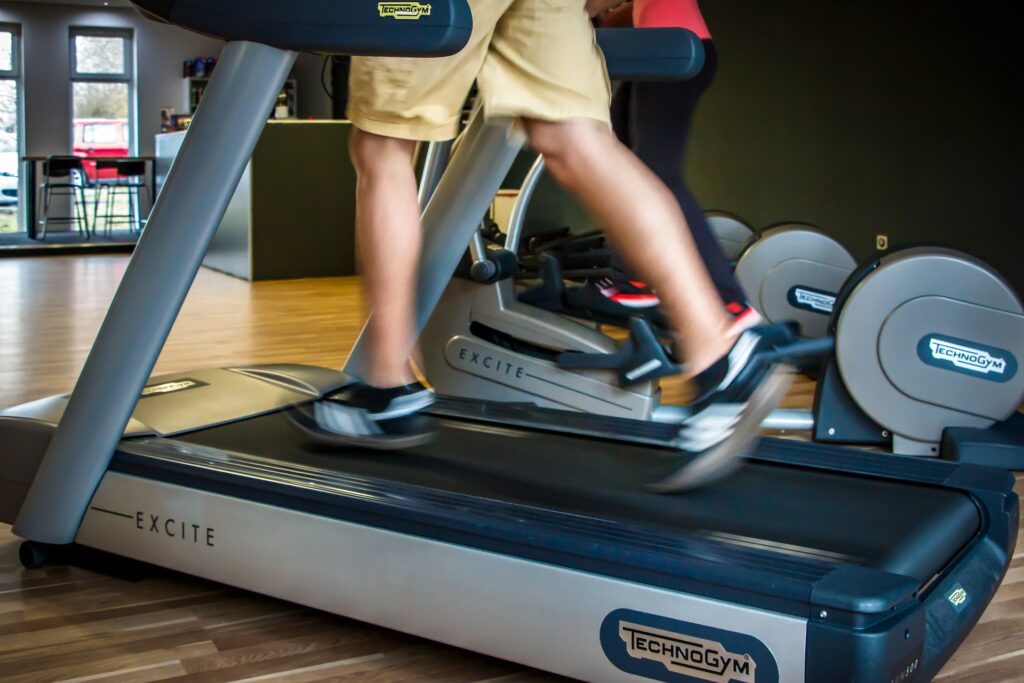
Walking on a treadmill is a fantastic way to get your heart pumping and burn fat throughout your body. It’s an easy and gentle form of exercise that’s accessible to everyone, regardless of fitness level. But if you’re eyeing weight loss, you might be wondering: how long do you need to walk to shed those extra pounds?
Let’s break it down: to lose a pound of fat, you need to burn about 3,500 calories a week. That translates to a 500-calorie deficit each day. If you’re strolling along at a leisurely 2 mph, you’ll burn around 175 calories per hour. Speed up to a brisk 4 mph, and you can burn about 325 calories in the same time. So, to lose a pound in a week, you’d need to walk for 90 minutes every day.
However, just walking on a treadmill might not be enough. To see real results, it’s essential to plan a well-rounded treadmill workout. Here are some tips to maximize your treadmill time and make it more enjoyable:
1. Create a Calorie Deficit

Losing weight comes down to burning more calories than you consume. While exercise helps, diet plays a crucial role. By cutting 500 calories from your daily intake, you can lose a pound a week. Combine this with your treadmill workouts, and you’re on the fast track to success!
2. Change Your Incline
Think of your treadmill as a personal mountain. Increasing the incline engages larger muscle groups like your thighs, quads, glutes, and calves, making your heart work harder and burning more calories. Start with a slight incline and gradually increase it as you get stronger. You’ll feel the burn without the joint strain of running.
3. Vary Speed and Stride

If you always walk at the same pace and incline, your body can quickly adapt, and your workouts may become less effective. Keep things exciting by varying your speed and stride. This not only prevents boredom but also challenges different muscle groups. Try a workout technique called Fartlek, which involves changing your speed and stride rhythmically. It’s a fun way to keep your body guessing and your mind engaged!
4. Adjust the Intervals
Interval training mixes periods of intense exercise with recovery periods. Start with a moderate pace for a warm-up, then increase your speed or incline for a minute or two before easing off. This variation keeps your heart rate up and maximizes calorie burn. For a 30-minute workout, break it into five-minute blocks with different focus areas, like speed, incline, or stride length.
5. Plan and Track Your Progress
To make the most of your workouts, track your heart rate, calorie burn, and how you feel. This data helps you understand your progress and make adjustments. Remember, as your body becomes more efficient, you’ll need to push yourself harder to keep burning fat. But don’t worry—this also means you’re getting fitter, stronger, and healthier!
Walking on a treadmill isn’t just about weight loss; it’s a great way to maintain overall health. It can help prevent and manage conditions like high blood pressure, cholesterol issues, and type 2 diabetes. Plus, it strengthens your bones and muscles, boosts your mood, and improves your balance and coordination.
So why not give treadmill walking a shot? It’s a simple yet effective way to stay fit and healthy. Lace up your sneakers, hop on that treadmill, and enjoy the journey to a healthier you!
Gentle Reminder: This article is not intended as a substitute for professional medical advice. Always seek appropriate medical assistance when necessary.
Featured Image by FitnessStore112 from Pixabay





Leave a Reply